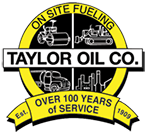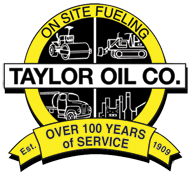Guidelines for the Set-Up and Maintenance of Onsite Fuel for Aboveground Storage Tanks – There are many benefits to monitoring your own diesel fuel on site, especially if you have a heavy-equipment fleet. You could get pretty deep discounts when you buy fuel in bulk, plus you don’t have to wait on fuel delivery services to top off your trucks, generators, and machines.
That being said, installing and maintaining bulk fuel tanks means you have to comply with many federal, state and local regulations. And when you begin dispensing your own fuel, you are responsible for making sure it is free from water and contamination. Proper storage-tank design and maintenance is critical in this circumstance.
Tank Design
For construction fleets, above ground storage tanks (ASTs) are an ideal option because they can be easily inspected and painted. They are less likely to have leaks and can also be safely relocated to different areas of your property if the need arises. On the other hand, it’s possible that vehicles can back into them, causing damage, plus they are vulnerable to weather extremes such as high winds and flooding. On top of that, they are also vulnerable to theft and vandalism. You may also experience soil and groundwater pollution arising from leaks.
Laws and Regulations
As we mentioned above, you have to comply with several federal, state and local regulations when installing an AST on your property. Research all of these prior to placing a tank on your job site, especially when it comes to zoning laws. Follow these general guidelines:
- An outdoor use tank must have an Underwriters Listed (UL) outdoor-use designation.
- You can’t use an indoor basement tank for outdoor use.
- Tanks designed to hold flammable liquids such as gasoline must be fire-guarded or vaulted so as to prevent fuel ignition for two hours in the event of a fire.
- Diesel fuel tanks don’t have to have a two-hour fire rating if the flash point is higher than 100 degrees Fahrenheit.
- A “secondary containment” area should be able to hold the contents of the primary tank upon failure.
- Double-walled tanks, dikes or “bathtubs” in which the primary tank is located all meet secondary containment requirements.
- Double-walled tanks are preferred, as rainwater is not an issue.
- Because you risk spillage with every fill-up, you should try to stick to once-per-month fill-ups. Make sure the tank you select can handle a month’s supply of fuel at once.
Contamination and Monitoring
It’s easy for tanks to become contaminated whenever the lids are opened, because they act as vacuums and tend to suck in all kinds of debris. As such, you must understand and manage the quality of the fuel that you’re putting in your tanks, taking preventive measures with year-round or winter treatments so corrosion, gelling and plugging do not occur.
Work with your fuel supplier to keep deliveries clean. Taylor Oil drivers and techs know all about clean delivery and transfer for your peace of mind.
Testing for Water
Take periodic tank content samples and send them to a lab for analysis. These tests can determine if there is separated water in the fuel tank. If this is present, you’ll have to remove it with a hose and clean the tank.
Training and Risk Management
It’s important for everyone on your site to know the risks associated with aboveground storage tanks. This means you should train anyone who works on or around the equipment or the fuel storage locations in the identification and elimination of risks. Make sure they know how to conduct routine inspections of fuel storage containers, dispense fuel and use pump shutoffs correctly.
Contact Taylor Oil
To learn more about our tank rentals or onsite fueling, contact us today.


